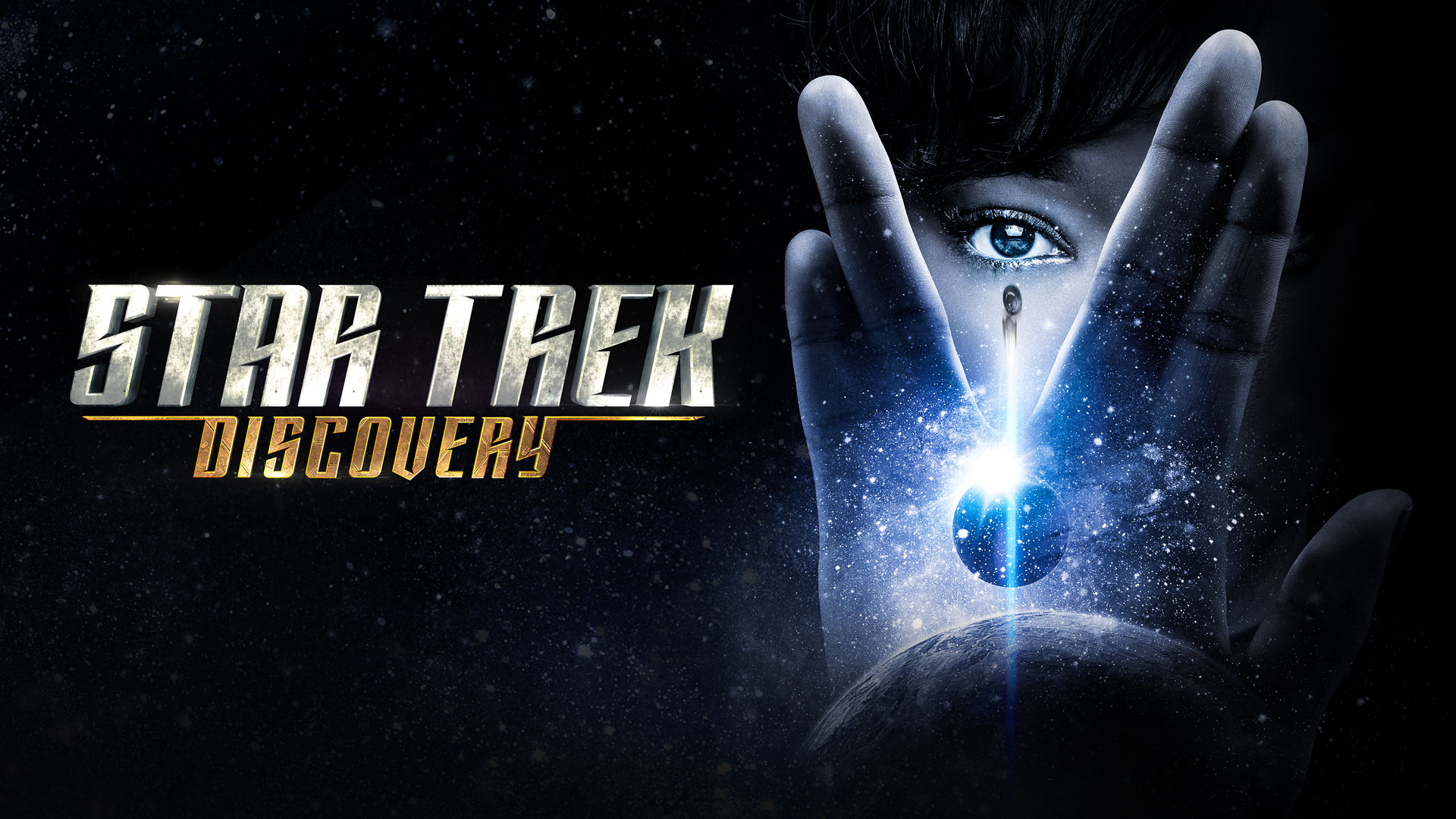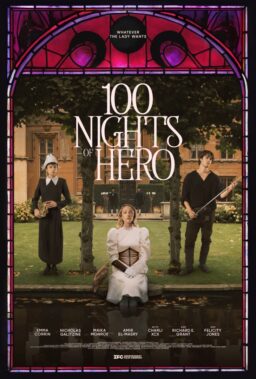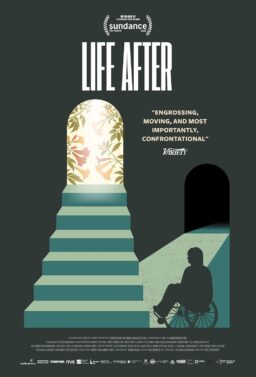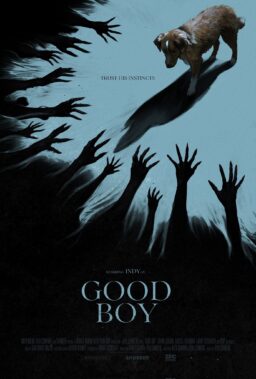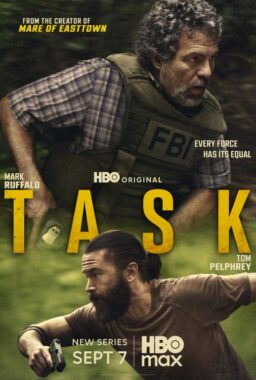Everything is a brand now. Movies, TV, food, clothes, even you. How you dress, how you act on social media, it’s your brand. If you’re doing your shtick successfully they’ll say you’re “on-brand,” and when they think about you it’s the first thing that comes into their mind. This is why film and television—the latter especially—are always trying to jump into the musical zeitgeist, notably because music in visual media works almost subconsciously, picking at what’s under your skin.
So when you’re in the kitchen making coffee and you hear distant strains of “Making your way in the world today …” you know you have to dash at warp speed to get into the den so you can watch “Cheers”. Or when the original “Star Trek” fanfare and theme show up in the season finale of new show “Discovery”, you know that means that it’s connecting us with something from the original 1966 series, in this case the appearance of the Starship Enterprise. Alexander Courage’s music clearly inspires something in our memory, those thoughts of watching Kirk and Co in the velour-wrapped ’60s show, and how does that make us feel? Warm and fuzzy, like they’ve done it just for us.
That it conjures up those emotions makes it even stranger that 1979’s big movie relaunch of the franchise—”Star Trek: The Motion Picture“—didn’t pay much attention to it. But when you look at the film, it doesn’t seem like such a big surprise after all. While it’s still clearly “Star Trek,” it’s not Star Trek, with director Robert Wise (“The Day The Earth Stood Still”) at the helm and Hollywood’s best trying to make everything look as real and plausible as possible, with it becoming clear that Gene Roddenberry was looking at this as the new “2001”. There was no room for primary colours, pulp action, or a jaunty theme, and instead Jerry Goldsmith, who was apparently Roddenberry’s first choice for the theme in 1966, took the podium, which in hindsight was nothing but a good thing.
But that doesn’t mean it was left out completely, for not only did the original theme make it in there, it was orchestrated and arranged by the composer himself. Alexander ‘Sandy’ Courage was also known as an orchestrator as well as a composer, so when it was decided to use the TV theme for the captain’s log intervals in the film he was the ideal man to bring his music back, albeit in a slow minor-key version to underscore the seriousness of the Enterprise’s mission. But while there was no fanfare, fans didn’t have long to wait, and as if to prove a point 1982’s “Star Trek II: The Wrath of Khan” opened with a strong rendition of the fanfare by composer James Horner. The message: we’re back in business.
In a reversal of previous fortune, the theme itself was left out but the consolation was plenty of readings of the fanfare, notably at the climax of the picture where we hear Spock reading the opening monologue from beyond the grave, with the score echoing the beginning of the 1966 opening titles. 1984’s “Star Trek III: The Search For Spock,” also scored by Horner, was a two-hour postlude to the previous film. It undid what that movie had done in killing Spock which, while dramatically effective, had robbed the franchise of its most popular character. Spock was brought back, and while Horner had again used the fanfare throughout the film he saved the best for last: As Spock finally recognized Kirk—’Jim … your name … is Jim.’—the ensuing fanfare segued into a warm and heart-rending reading of the full theme. We were back, again.
1986’s “Star Trek IV: The Voyage Home” brought onto the series veteran composer Leonard Rosenman, and while he barely used Courage’s music in place of his own theme, it was originally a different story. As it is now, the film opens with the Courage fanfare before seguing to Rosenman’s main theme, but the initial idea was to use a full rendition of the ’66 theme over the titles. This was actually recorded and can be found on the special edition release of the soundtrack, but it perhaps doesn’t have the urgency of Rosenman’s theme. However, the finale does include both the fanfare and theme in a huge way, again representing a return to the loved equilibrium as Kirk and crew are given a brand new Enterprise to gallop around the cosmos in. Warm? Check. Fuzzy? Check.
By the time 1989’s “Star Trek V: The Final Frontier” rolled around, “The Next Generation” had already been on television screens for two years, introducing the world to a new Enterprise and a new crew, but with old music. While Dennis McCarthy—who would go on to write music for “The Next Generation”, “Deep Space Nine”, “Voyager“, and “Enterprise” as well as feature film “Generations”—had submitted a theme for the show, it was eventually decided that he would arrange a new recording of two previously separate pieces of music, connecting Courage’s fanfare with Goldsmith’s main theme from “The Motion Picture”. The resulting marriage worked like a charm, and further pushed Goldsmith’s already adored theme into a new degree of iconography. This made it all the more stranger when the composer began his task of scoring “The Final Frontier” by including this new union, which would become the de facto way of introducing his 1979 theme in subsequent movies.
1991 saw the release of not only the sixth of the films but also the final with the original crew. In “Star Trek VI: The Undiscovered Country”, Cliff Eidelman used the fanfare sparingly until the climax when he went all out, scoring the final shot of the Enterprise disappearing into a blinding star—and the subsequent on-screen signatures of all six original cast members—with powerful statements of Courage’s fanfare. The end…or not. 1994’s “Star Trek: Generations” saw the death of Captain Kirk, and for his funeral it used—you guessed it—the fanfare, in a sensitive reading by McCarthy, who also interpolated his own theme for the film. The next three pictures—1996’s “First Contact”, 1998’s “Insurrection”, and 2002’s “Nemesis”—were all scored by Goldsmith, and while all featured the Courage fanfare to open the opening and end titles, that was really it. For the usual establishing shots of the Enterprise and such Goldsmith’s theme was used, so the fanfare was strictly used as an introductory piece to warm the audience up as it were, and to be fair it worked, and many of us were delighted to see the Paramount logo with Goldsmith’s arrangement of the fanfare.
Of course, that all changed in 2009. “Star Trek” was a brand new go at the franchise, and it followed the 1979 debut by not opening with the fanfare. In fact, save for a snippet or two of the opening four notes, there was nothing of Courage’s music until the ending, where Spock read the monologue before the Enterprise whooshed off into space. For that sequence, Michael Giacchino brought in a huge rendition of the fanfare followed by a fun reading of the theme for the end credits, and the same was for the two sequels, 2013’s “Star Trek Into Darkness” and 2016’s “Star Trek Beyond,” with readings of the fanfare even deleted from the final film for the former. At the time of the first film, there was talk that it was withheld until the end because the crew “hadn’t earned it yet”, although at the same time some fans felt that director J.J. Abrams was somewhat embarrassed by the Courage music, especially as he was trying to make the franchise hip and cool. For what it’s worth Giacchino’s arrangement is fantastic.
And thus we come to “Star Trek: Discovery”. Set decades before the original series, Jeff Russo’s score nevertheless incorporates the Courage fanfare into the opening credit sequence alongside his own string-led theme, and it works well. I would imagine for a series so controversially ‘different,’ the musical identity was one thing that needed to be retained; something to say ‘This is still “Star Trek”‘. But in the recently-aired finale of season one the fanfare was brought out again, this time because—in the composer’s own words in Variety—”It is the Enterprise.” With a sweeping shot of the ship, this time commanded by Christopher Pike, Russo gives us a triple reading of the fanfare with each more powerful than the previous, before the end credits perform an updated version of the theme with a soprano solo by Israeli-American vocalist Ayana Haviv.
This shows again that the most easily identifiable aspect of “Star Trek” is that fanfare. Burnham says the words ‘U.S.S. Enterprise’ and the melody opens before we even catch sight of the ship, because we know what it is, and what it means to us, and the use of the theme over the credits wraps it up. There was a lot of talk before “Discovery” aired about where it fit in the timeline and how it relates to the “Star Trek” we know, and this continued throughout the season. So with the division between fans clear and the controversy still apparent, bringing the show on a course with the ship that started it all is a smart move that leaves the first season with that warm and fuzzy feeling, that safety blanket of Alexander Courage’s music that we can wrap ourselves in, telling ourselves that ‘This is “Star Trek.'”
It’s so on-brand.
